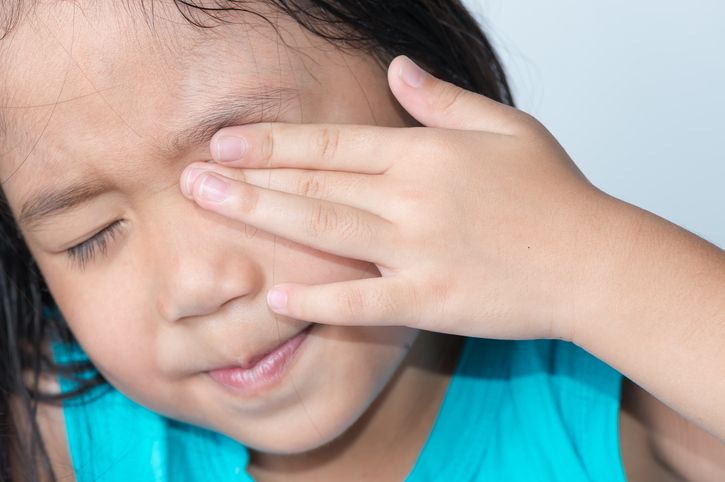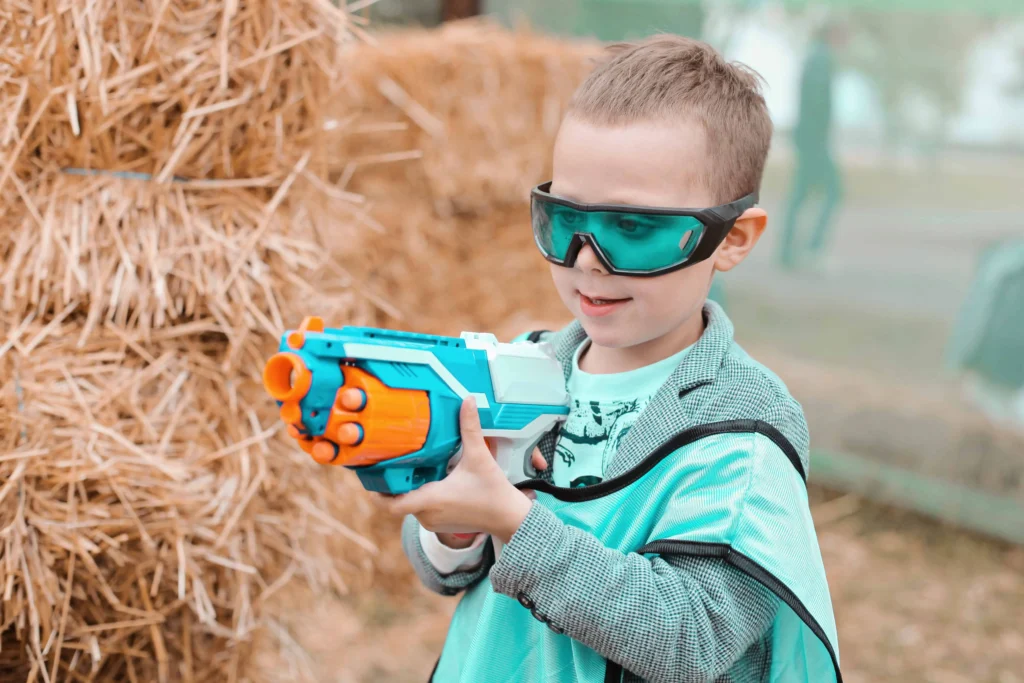Roughly 1 in 10 children’s eye injuries that end up in the ER are caused by toys. In support of Safe Toys and Celebrations Month this December, the American Academy of Ophthalmology advises parents to be cautious when choosing holiday gifts for young people and recommends avoiding those that launch projectiles, such as crossbows and BB guns.
Eye injuries, or eye trauma, caused by toy guns and projectiles are a concerning issue, especially among children. As parents and caregivers, it’s essential to be aware of the potential risks and take proactive steps to prevent accidents. Learn the common causes of eye injuries related to toy guns, their potential consequences, and most importantly, effective strategies to safeguard young eyes during play.
Understanding the Risks
- Projectile Speed and Force:
- Toy guns, especially those designed to mimic real firearms, can shoot projectiles at high speeds. The force of impact can result in serious injuries to delicate eyes.
- Lack of Protective Gear:
- Many children engage in play without protective eyewear, leaving their eyes vulnerable to accidental impacts. The absence of appropriate safety gear increases the risk of injury.
- Unintentional Aim:
- Even in innocent play, children may unintentionally aim toy guns at themselves or others, leading to unexpected and potentially harmful consequences.

Consequences of Eye Injuries
Understanding the potential consequences of eye injuries is essential for parents to grasp the gravity of the issue:
- Vision Impairment:
- Serious eye injuries can result in temporary or permanent vision impairment, affecting a child’s ability to learn and engage with the world.
- Emotional Impact:
- Eye injuries can have a profound emotional impact on children, leading to fear, anxiety, and a potential aversion to certain activities.
- Long-Term Consequences:
- Untreated eye injuries may have lasting consequences, increasing the risk of developing eye conditions or complications later in life..
Preventive Measures
Now that we understand the risks and consequences, let’s explore practical steps to prevent eye injuries during playtime.
- Choose Safe Toys:
- When selecting toys, opt for those designed with safety in mind. Look for features such as soft projectiles or built-in protective mechanisms to minimize the risk of injury.
- Educate About Safe Play:
- Teach children about responsible play, emphasizing the importance of not aiming toys, especially projectiles, at faces. Encourage them to play in designated areas away from others.
- Enforce Eye Protection:
- Make protective eyewear a non-negotiable part of playtime. Just as helmets and knee pads are worn for certain activities, protective eyewear can significantly reduce the risk of eye injuries.
- Supervise Playtime:
- Always supervise children during play, intervening when necessary to ensure safe behavior. This not only prevents potential accidents but also teaches responsible play habits.
Prioritizing our children’s safety means being proactive and informed. By understanding the risks, recognizing potential consequences, and implementing preventive measures, we can create a safe environment for our children to enjoy playtime without compromising their eye health.
Treating Eye Injuries at Optical Illusions
By understanding the risks associated with toy guns and projectiles, parents and caregivers can take proactive steps to protect children’s eyes and prevent avoidable injuries. Through a combination of safe toy choices, education, and the use of protective gear, we can create a safer environment for our children’s playtime, ensuring their eyes remain healthy and free from harm.
At Optical Illusions, we are proud to offer a wide range of specialty eye care services, including emergency eye care and an after-hours service. Contact our team to schedule your appointment at one of our four conveniently located offices.



